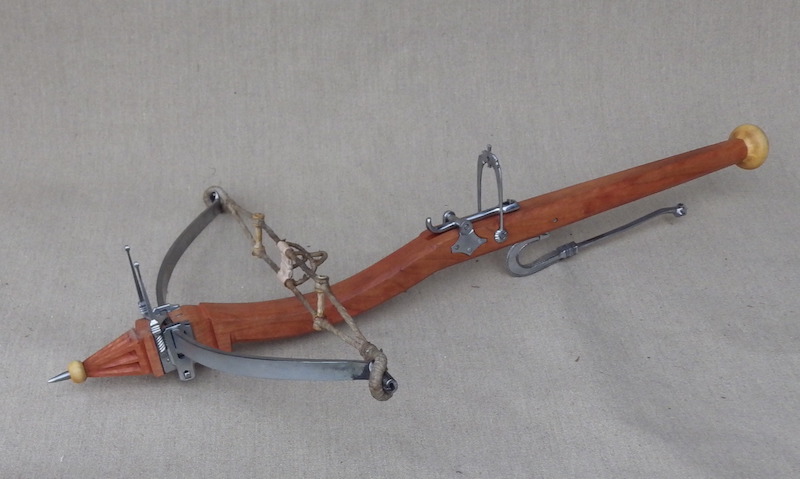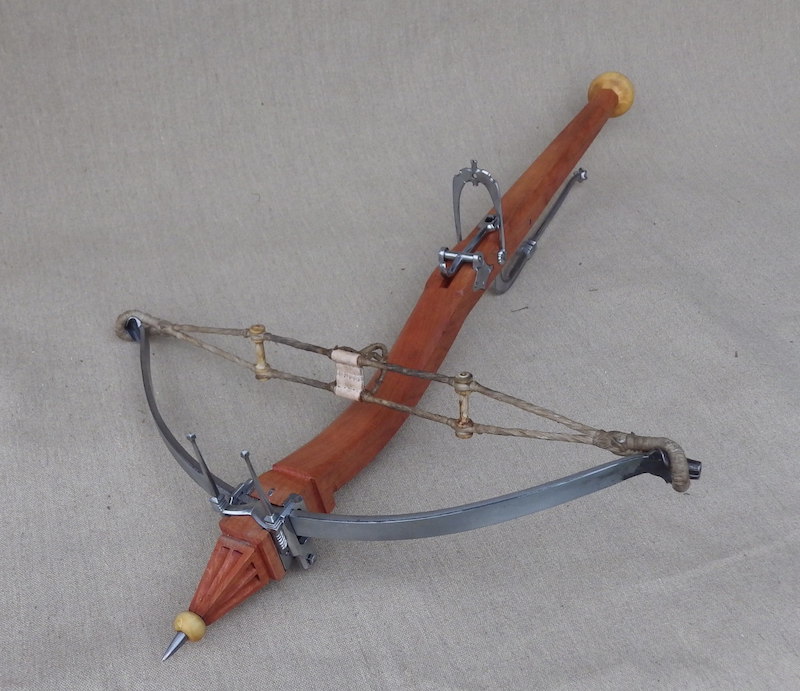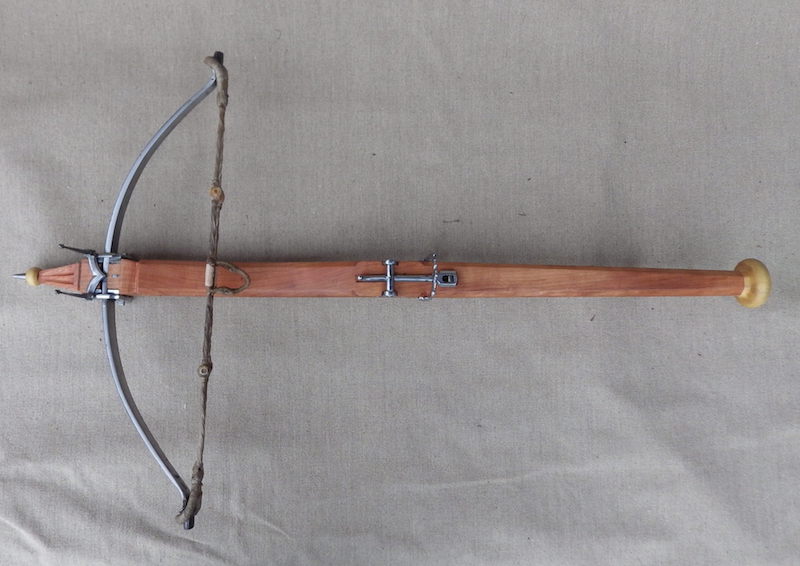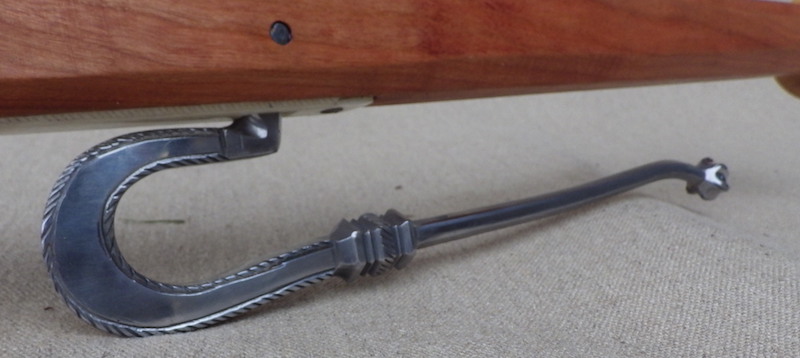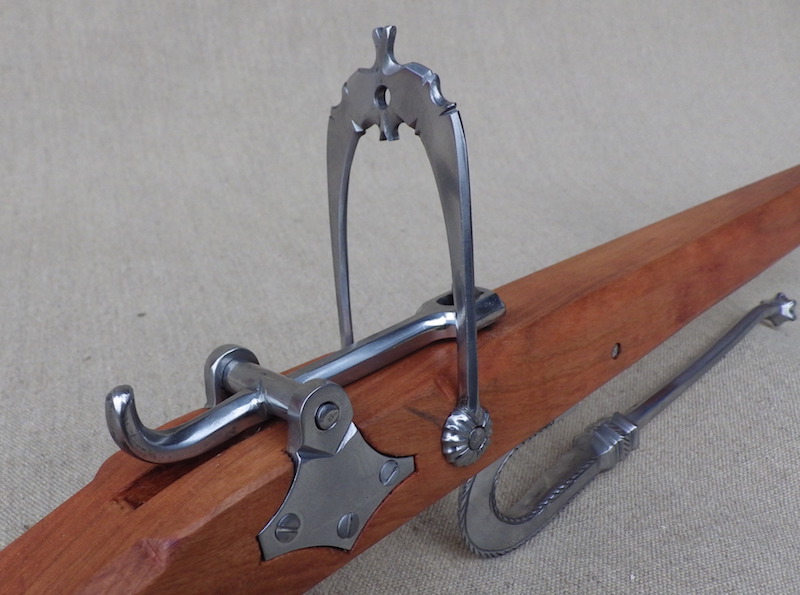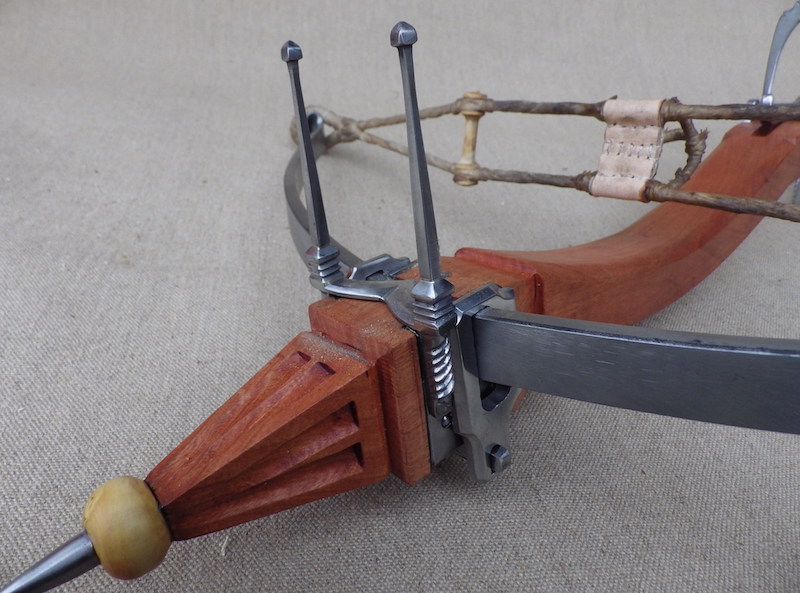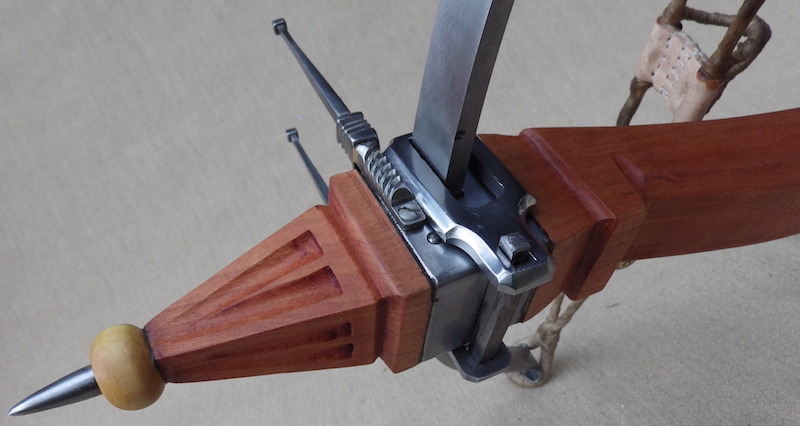Stone bows seemed to have started in China and started life as generally fairly light bows, used for shooting clay or lead balls at birds in trees. They are great at this and with clay shot, there is no cost associated with ammunition loss or usage.
They seemed to have come to Europe in the mid 15thC and gained a great deal of popularity through the 16thC, when they started to become really quite powerful and indeed (perhaps fancifully) queen Elizabeth is shown shooting at a stag with one. They were in quite wide usage through until the 19thC. We still of course have bows that shoot ball, but these are now single string affairs. We have plenty of manuscript pictures of English bows, but very few real ones from this early period.
This bow is based on English examples and so has a plainer stock that the Italian and Spanish styles, but I tried to make the metalwork a little extravagant.
The spiked nose of the forestock is not an offensive feature, but is to dig into the ground whilst the bow is spanned, so that it doesn't slip away as you draw it. The method of spanning is to put the spike into the ground and the button on the butt into your stomach and draw the bow back so this of course limits the power to around 150-170lbs.
The rear sight has a central peep and V slot above and below and also pivots, so it is fully adjustable over a wide range of heights. The fore pillars also take a thread loop with a bead, so this can be adjusted for elevation and windage. Incidentally I have wondered if this is where the use of the word 'bead' comes from when talking about sighting in a target.
The stock is in cherry, the stock button at the back is box, as is the one on the fore stock. All the metal furniture is in steel and the bow string is in linen and leather. The trigger is sprung and the trigger slot covered by a decorative bone panel.
The bow can shoot either 20 gauge lead or clay shot. Clearly the lead will hit with a much bigger punch, but for birds, generally clay will be enough.
I will get this on a chrono for speed and also make a video of it in use in due course.
I hope you like it.
Tod
